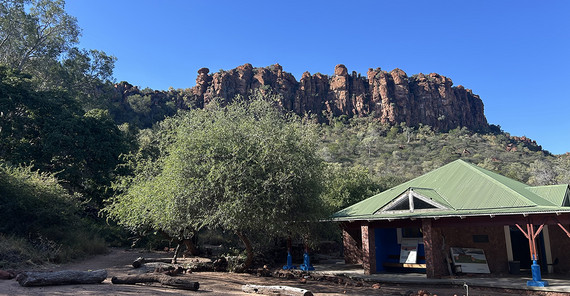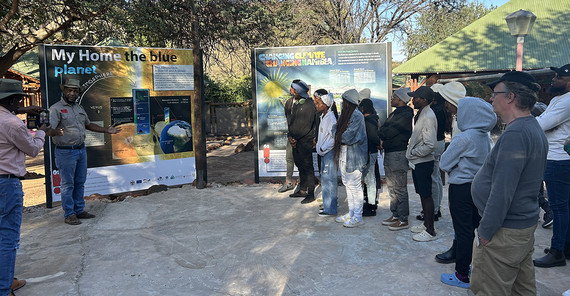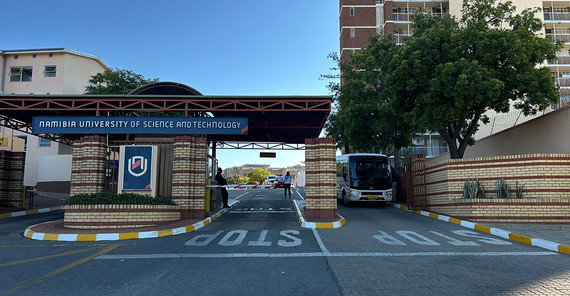After gathering at NUST university, the group sets off on a four-hour drive to the Waterberg area. Our destination is the Okatjikona Environemantal Education Center, a small but cozy research centre located at the feet of the impressive Waterberg Plateau, with its characteristic red rocks and lush vegetation.
Dr. Clara Nesongano, who is NamTip’s principal investigators from UNAM, welcomes us to the center. She explaines that the name of this area dates back to around 400 years ago and was originally called Okatjikunua, which translates to "uncultivatable." This historical explanation provides a meaningful context for the opening event of the Winter School, which takes place in a small, conference room of the centre, filled withstuffed animals and decorated with posters of local birds.
“Perhaps the biggest motivation for choosing the GWL as a study area is that it provides us with an opportunity to study two contrasting grazing management systems: freehold farming and communal farming” she says. “It is especially important to involve the younger generations, because they will be the ones shaping future decisions”.
As part of this introduction, we learn about the NamTip project and its different objectives. The main presentation of the afternoon is held by Corris from EduVentures, one of the Namibian implementing partners, focusing on knowledge dissemination to school learners. He talks about climate change adaptation, connecting global causes and consequences to the local context in Namibia. Although Namibia has a relatively small carbon footprint compared to countries like Germany or the USA, the consequences of ongoing climate change are expected to be particularly severe here. Thus, his presentation includes example solutions how Namibia can adapt to changing climate conditions, for example by reducing the number cattle in favour of smaller livestock, increasing solar and wind energy production.
Link to NamTip website:https://www.uni-potsdam.de/en/namtip



